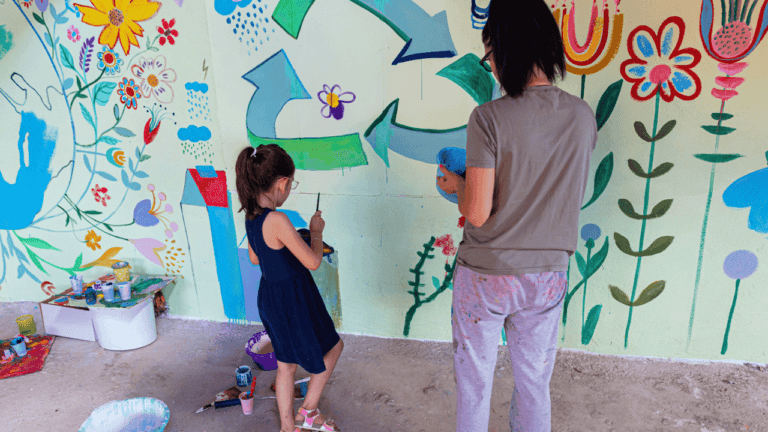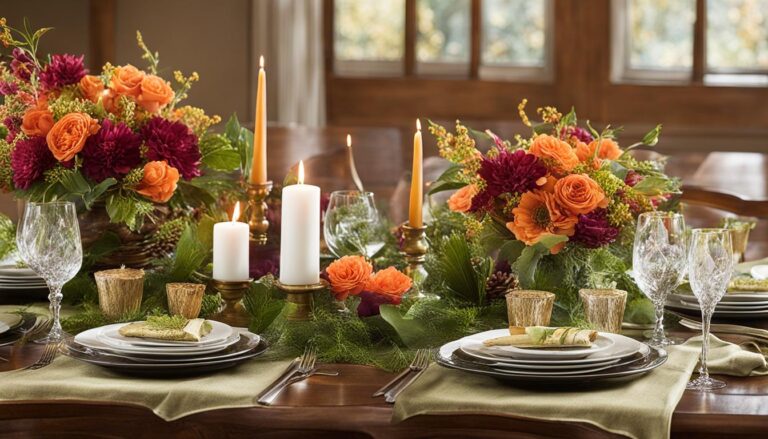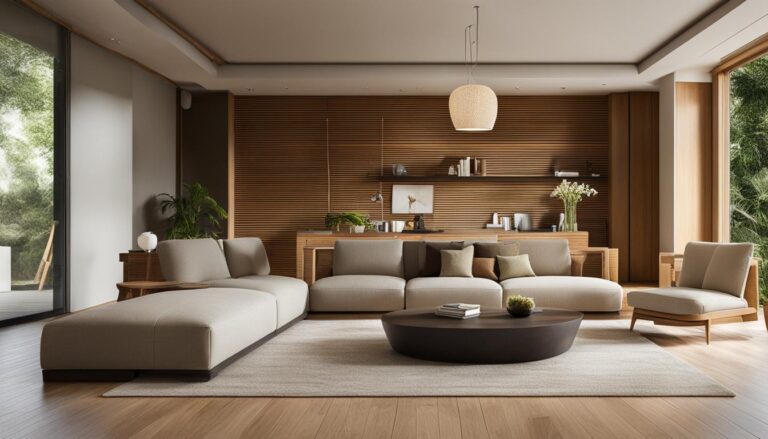Introduction
Decorating your home is more than just a task; it’s an art form that allows you to express your personality and create a space that truly feels like your own. This comprehensive guide aims to equip you with the knowledge and inspiration needed to embark on this exciting journey. By understanding your unique style and learning the practical steps of decorating, you can transform any space into a reflection of your personal taste and lifestyle.
 Finding Your Home Decor Style
Finding Your Home Decor Style
When it comes to decorating your home, one of the first steps is to determine your personal decor style. This will help create a cohesive and harmonious look throughout your space. Here are a few tips to help you find your home decor style:
Understanding Personal Preferences
The journey to uncovering your home decor style begins with a deep dive into your personal preferences. This process is about more than just selecting colors and furniture; it’s about discovering what makes you feel most at home. Ask yourself key questions: Are you calmed by a clean, uncluttered space, indicating a preference for minimalism? Or do you find comfort in the rich textures and diverse patterns indicative of an eclectic or bohemian style? Perhaps you’re drawn to the timeless elegance of traditional decor or the sleek lines of contemporary design.
Consider also the elements that you’re consistently drawn to. Do you prefer soft, plush fabrics, or are you more attracted to sleek, smooth surfaces? Are natural elements like wood and stone appealing to you, or do you prefer the look and feel of modern, synthetic materials? Recognizing these preferences is essential in developing a style that feels authentic and comfortable for you.
Exploring Different Decor Styles
With a clearer understanding of your preferences, the next step is to explore various decor styles. This exploration is not about boxing yourself into a specific category but about understanding the wide spectrum of options available to you and how they might align with your tastes.
- Scandinavian Minimalism: Known for its simplicity, functionality, and use of natural materials. It often features a neutral color palette and clean, simple lines.
- Bohemian Chic: This style is characterized by a carefree, eclectic mix of patterns, textures, and vibrant colors. It often includes global influences and a mix of vintage and handmade items.
- Modern Industrial: Combines exposed steel with rustic wood elements. It’s known for its utilitarian and no-frills aesthetic, often featuring a neutral tone with metallic accents.
- Mid-Century Modern: Recognizable by its sleek lines, organic forms, and emphasis on function. This style often includes pieces with a retro feel but a modern twist.
Research these styles and more, such as coastal, farmhouse, traditional, or art deco. As you explore, take note of which elements from each style resonate with you. You may find that your style is not defined by one single category but is instead a fusion of several influences.
Integrating Lifestyle and Practicality
Your lifestyle is a critical factor in determining your decor style. The design should not only be aesthetically pleasing but also functional and suited to your daily life.
- For Families with Young Children: Durability and ease of cleaning might be top priorities. Consider stain-resistant fabrics, rounded furniture edges, and ample storage for toys.
- For Busy Professionals: A low-maintenance, clutter-free space with smart storage solutions might be ideal. Streamlined furniture and a neutral palette can create a serene environment conducive to relaxation after long work hours.
- For Entertainers: If you love hosting, consider a layout that facilitates social interaction. A spacious living area, a well-appointed dining room, and comfortable guest accommodations might be essential.
Reflect on how you spend your time at home and what functional needs your decor must fulfill. This will ensure that your home is not only beautiful but also practical and comfortable.
Seeking Inspiration
Finally, the quest for your perfect home decor style involves seeking inspiration from a variety of sources. This can be an enjoyable and eye-opening part of the process.
- Magazines and Books: Home decor magazines and books are rich sources of inspiration. They provide high-quality photographs of styled homes, offering insights into color combinations, furniture placement, and accessorizing.
- Online Platforms: Websites like Pinterest and Instagram are treasure troves of ideas. You can search for specific styles, color schemes, or room types, and save ideas to your own digital mood board.
- Interior Design Blogs and Shows: Follow interior design blogs and watch home makeover shows. These can provide practical advice and creative ideas from experts in the field.
- Real-life Observation: Don’t underestimate the power of observing the spaces around you. Whether it’s a cozy cafe, a stylish boutique, or a friend’s home, real-life environments can provide tangible and relatable decor ideas.
 Decorating Your Home Yourself
Decorating Your Home Yourself
Once you have identified your home decor style, it’s time to start decorating your space. Here are some practical tips to help you achieve a beautifully decorated home:
Decorating your home is a personal journey that allows you to infuse your living space with your unique essence. This process can be both exciting and challenging, especially when balancing aesthetics with practicality. Here, we delve deeper into each step to help you navigate this journey.
Planning and Budgeting
The foundation of a successful home decorating project lies in meticulous planning and budgeting. Begin by assessing the scope of your project. Are you looking to refresh a single room or are you planning a full-house makeover? This decision will significantly influence your budget and planning.
- Setting a Budget: Establish a realistic budget that covers all aspects of your project. Include costs for paint, furniture, accessories, and any professional services you might need. It’s wise to set aside an additional 10-20% of your budget for unforeseen expenses.
- Prioritizing Tasks: List out all the tasks and decide which ones need immediate attention. For instance, painting walls or repairing any damages might be the first steps before moving on to furniture and decor.
- Timeline: Create a realistic timeline. If you’re doing multiple rooms, it might be practical to tackle them one at a time to prevent the entire house from becoming disorganized.
Choosing a Color Scheme
The color scheme sets the tone for your entire space. It can influence mood, perception of space, and the overall aesthetic.
- Start with Your Favorite Colors: Begin with colors you love as a base for your palette. From there, you can build a cohesive color scheme.
- Consider the Space: Room size, natural light, and the intended mood play a significant role in color selection. Light colors can make a small room feel larger and brighter, while dark colors can add depth and coziness to a large room.
- Create a Palette: Use color theory to create a balanced palette. You can go for a monochromatic scheme (different shades of the same color), a complementary scheme (colors opposite on the color wheel), or an analogous scheme (colors next to each other on the color wheel).
Selecting Furniture and Accessories
Furniture and accessories are the heart of home decor. They not only define the style but also the functionality of your space.
- Furniture Selection: Choose furniture that reflects your style and fits the scale of your room. Consider the room’s layout and traffic flow when placing furniture.
- Accessorizing: Accessories like rugs, curtains, cushions, and art pieces can tie the room together. They are a great way to introduce color, texture, and personality into the space.
- Mixing Textures and Materials: Combining different textures and materials can add depth and interest. For example, a leather sofa paired with soft, plush cushions creates a balance of textures.
 Balancing Functionality and Aesthetics
Balancing Functionality and Aesthetics
A well-decorated home is not just about beauty; it’s about creating a space that works for your lifestyle.
- Functionality: Ensure that each room serves its intended purpose. The furniture layout should facilitate ease of movement, and storage solutions should be practical.
- Ease of Maintenance: Choose materials and finishes that are easy to clean and maintain, especially in high-traffic areas.
- Lighting: Good lighting is crucial. Include a mix of ambient, task, and accent lighting to make the space functional and inviting.
DIY Decor Projects
Engaging in DIY decor projects can be a fulfilling way to personalize your space.
- Repurposing and Upcycling: Look at existing pieces and see if they can be repurposed. Painting an old piece of furniture can give it a new lease on life.
- Handmade Decor: Creating your own wall art, pillow covers, or even planters can add a unique touch to your home.
- Learning and Experimenting: Use online tutorials and workshops to learn new DIY techniques. Experimentation is key to finding what works best for your space.
Conclusion: Creating Your Perfect Home
Decorating your home is an exciting and creative process that allows you to transform your living space into a reflection of your personal style. By finding your home decor style and following the tips provided in this guide, you’ll be well on your way to creating a beautifully decorated home.
Remember, the key to successful home decor is to create a space that not only looks visually appealing but also feels comfortable and functional. Experiment with different elements, trust your instincts, and most importantly, have fun!
Frequently Asked Questions
Decode the magic of gardens with our guide to Landscaping Styles Frequently Asked Questions.
- There are no set rules for updating your home decor. It ultimately depends on your personal preferences and how often you feel the need for a change. Some people enjoy updating their decor seasonally, while others prefer a more timeless look that can last for years.
- Absolutely! Mixing different decor styles can create a unique and eclectic look. However, it’s important to maintain a sense of balance and harmony by incorporating complementary elements.
- Decorating a small space requires careful planning and smart design choices. Opt for light colors, mirrors to create an illusion of space, and multifunctional furniture to maximize functionality.
- There are many ways to make your home decor more sustainable. Choose eco-friendly materials, repurpose and upcycle old items, and invest in energy-efficient appliances.
Recent Posts
- Modern Mural Ideas Transforming Walls into Artworks
- Thematic Table Decor Dressing Your Table for Special Occasions
- Festive Lighting Ideas Brightening Your Home for the Holidays
- Biodegradable Decor Materials Choosing Earth-Friendly Options
- Personalized Space Decor Making Your Home Uniquely Yours
- New Year’s Eve Decor Ringing in the New Year in Style
- Transforming Junk into Decor Upcycling at Its Best
- Second-Life Decor Objects Giving Old Items New Purpose
- Unique Decoration Crafting Standout Ideas for Your Home
- Environmentally Friendly Styling Decor with a Conscience












